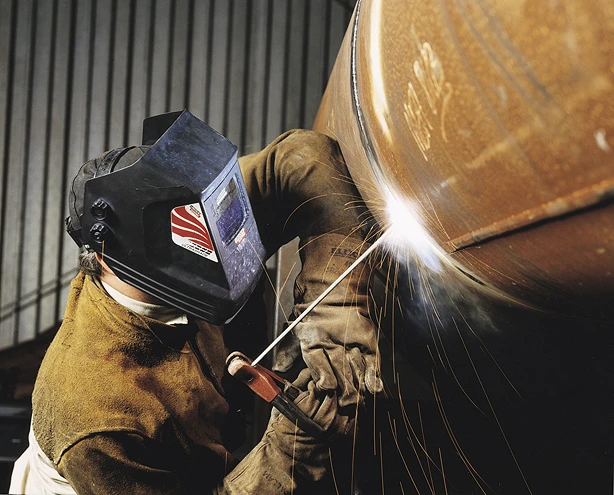Maximizing Your Welding WPS: Techniques for Improved Efficiency and Efficiency
Maximizing Your Welding WPS: Techniques for Improved Efficiency and Efficiency
Blog Article
Achieving Welding Quality: Revealing the Tricks of WPS Implementation and Optimization
In the realm of welding, attaining excellence is a quest that pivots on the careful execution and optimization of Welding Treatment Specifications (WPS) By diving into the key elements, techniques, challenges, and finest practices linked with WPS, a globe of welding quality awaits those who are ready to explore its midsts.
Significance of WPS in Welding
The Importance of Welding Procedure Specifications (WPS) in the welding industry can not be overemphasized, offering as the backbone for guaranteeing consistency, high quality, and safety and security in welding procedures. A WPS gives detailed guidelines on how welding is to be carried out, including important variables such as products, welding procedures, joint design, filler metals, preheat and interpass temperature levels, welding currents, voltages, travel speeds, and much more. By sticking to a well-defined WPS, welders can preserve harmony in their work, leading to consistent weld top quality across different projects.

Trick Components of WPS
Talking about the integral parts of a welding procedure spec (WPS) is vital for recognizing its role in welding operations. One important element of a WPS is the welding procedure requirements, which describes the particular welding processes to be made use of, such as gas tungsten arc welding (GTAW) or protected metal arc welding (SMAW) By integrating these crucial elements into the WPS, welding procedures can be standard, making certain top quality, effectiveness, and safety in welding operations.
Techniques for WPS Optimization

Secondly, training and qualification of welding employees according to the certain demands of the WPS is extremely important. Providing extensive training programs and ensuring that welders are licensed to implement procedures described in the WPS can lead to better welds and decreased rework.
Furthermore, leveraging modern technology such as welding software and monitoring systems can help in optimizing WPS. These tools can assist in tracking variables, ensuring parameters are within specified limits, and supplying real-time responses to welders, allowing them to make prompt modifications for boosted weld quality.
Typical Challenges and Solutions
Facing barriers in executing the strategies for WPS optimization can impede welding operations' effectiveness and high quality. One common challenge is poor training or understanding of the welding treatment requirements (WPS) among the welding group. This can bring about inappropriate implementation of welds, causing problems and remodel. To resolve this, thorough training programs need to be applied to make sure that all welders excel in analyzing and using WPS precisely. look here
An additional obstacle is the absence of proper documentation and record-keeping, which is important for WPS optimization. Without clear records of welding specifications, materials made use of, and assessment results, it becomes challenging to recognize areas for enhancement and guarantee uniformity in welding processes. Implementing a robust paperwork system, such as digital welding administration software program, can aid simplify record-keeping and facilitate data analysis for continual renovation.
Additionally, irregular welding equipment calibration and maintenance can posture a considerable obstacle to WPS optimization. Normal devices checks, calibration, and upkeep schedules need to be stuck to purely to ensure that welding parameters are accurately controlled and kept within the defined tolerances (welding WPS). By dealing her response with these common challenges with aggressive remedies, welding procedures can boost effectiveness, top quality, and general welding excellence
Finest Practices for WPS Execution
To make certain effective WPS application in welding operations, adherence to market requirements and careful attention to information are vital. When starting WPS implementation, it is vital to begin by completely recognizing the details welding needs of the project. This involves a thorough evaluation of the welding procedure specs, materials to be welded, and the ecological conditions in which the welding will happen.
When the needs are clear, the following step is to choose the proper welding treatment that lines up with these specs. This includes speaking with the pertinent codes and criteria, such as those provided by the American Welding Society (AWS) or the International Company for Standardization (ISO), to make great post to read sure compliance and quality.
In addition, recording the entire WPS implementation procedure is essential for traceability and quality assurance. Detailed records need to be kept pertaining to welding criteria, product preparation, interpass and preheat temperatures, welding consumables used, and any kind of variances from the original procedure. Normal audits and reviews of the WPS can help recognize areas for renovation and ensure continuous optimization of the welding procedure.


Conclusion
To conclude, the application and optimization of Welding Procedure Specs (WPS) is vital for attaining welding excellence. By comprehending the vital components of WPS, applying effective approaches for optimization, addressing typical obstacles, and following ideal techniques, welders can make sure top notch welds and safe working conditions. It is vital for experts in the welding industry to prioritize the appropriate implementation of WPS to enhance general welding efficiency and achieve preferred end results.
The Significance of Welding Procedure Requirements (WPS) in the welding market can not be overstated, offering as the foundation for making certain uniformity, quality, and security in welding procedures. A WPS supplies in-depth guidelines on exactly how welding is to be brought out, consisting of crucial variables such as products, welding processes, joint design, filler metals, interpass and preheat temperature levels, welding currents, voltages, travel speeds, and more. One critical aspect of a WPS is the welding procedure spec, which outlines the specific welding processes to be made use of, such as gas tungsten arc welding (GTAW) or secured steel arc welding (SMAW) By including these key aspects right into the WPS, welding procedures can be standardized, making certain top quality, performance, and safety and security in welding operations.
It is important for specialists in the welding sector to focus on the appropriate application of WPS to boost overall welding efficiency and attain preferred end results.
Report this page